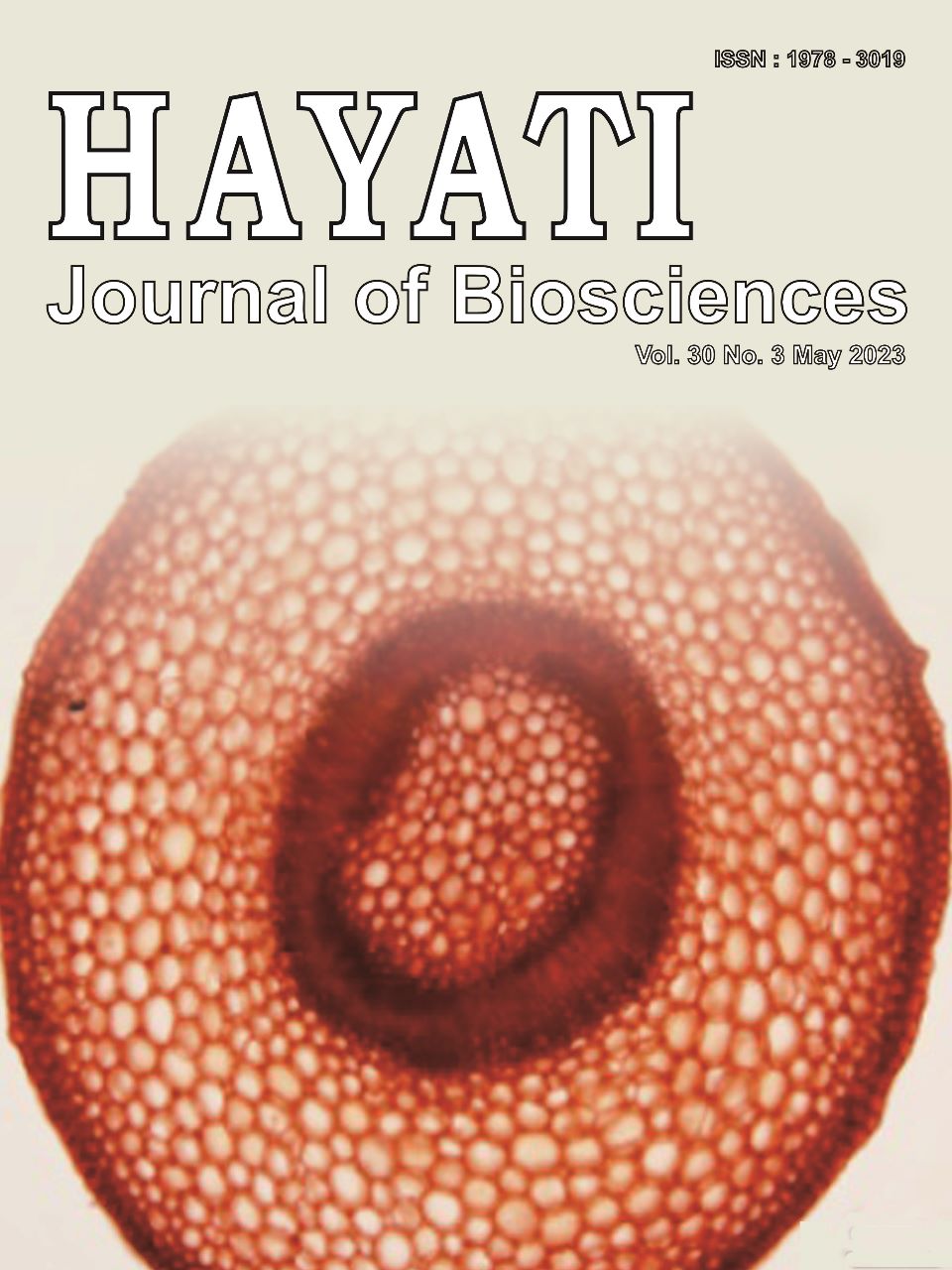Phytotoxic and Cytotoxic Polyketides Produced by Fungal Endophytes Isolated from Psidium guajava
Abstract
Endophytic fungi reside within their host plants with no obvious symptoms. They have been proven as abundant sources of new bioactive compounds with diverse structures. In our continuous search of the new compound from endophytic fungi, a new compound, 5,7-dihydroxy-3(R)-methylphthalide (1), was isolated from Xylaria brevipes PGR1, and three known compounds, (–)-altenuene (2), alternariol (3), and altertoxin I (4), were isolated from Alternaria alternata D-8. Both endophytic fungi were isolated from the branch of an Indonesian medicinal plant, Psidium guajava. Their structures were elucidated using extensive spectroscopy analyses, including 1D/2D NMR, HRESITOFMS, and data comparisons with the literature. Compounds 1–3 exhibited phytotoxicity at IC50 (µg/ml) values of 4.6, 23.07, and 77.28, respectively. Additionally, 1–4 showed significant cytotoxicity in the brine shrimp lethality test (BSLT), with mortality rates at 75%, 50%, 90%, and 80% at the concentration of 0.19 μg/ml, respectively.
Downloads
Copyright (c) 2023 Tendy Oktriawan, Nanang Ariefta, Tri Joko Raharjo, Endang Astuti, Takuya Koseki, Yoshihito Shiono

This work is licensed under a Creative Commons Attribution-NonCommercial 4.0 International License.
HAYATI J Biosci is an open access journal and the article's license is CC-BY-NC. This license lets others distribute, remix, tweak, and build upon author's work, as long as they credit the original creation. Authors retain copyright and grant the journal/publisher non exclusive publishing rights with the work simultaneously licensed under a https://creativecommons.org/


















.png) IPB University
IPB University Department of Biology
Department of Biology The Indonesian Biological Society
The Indonesian Biological Society 

